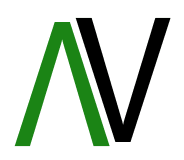The term “401(k)” is one that comes up a lot when discussing retirement planning. With its tax-advantaged method of building up a future nest egg, this financial tool has become an essential component of retirement savings for a large number of Americans. But even with its widespread use, many people find it intimidating to understand the 401(k)’s complexities. We will examine the ins and outs of 401(k)s, including what they are, how they operate, their advantages, possible drawbacks, and tactics for optimizing their benefits, in this extensive guide.
What is a 401(k)?
Let’s start by defining a basic understanding of what a 401(k) is. A 401(k) is, in simple terms, an employer-sponsored retirement savings plan. In order to save money for retirement, it enables workers to deposit a portion of their pre-tax income into an investment account. Since these contributions are usually taken out of the worker’s paycheck, it’s an easy and organized approach to save money down the road.
How Does a 401(k) Work?
To maximize a 401(k)’s benefits, one must comprehend how it operates. This is the general way that it works:
Employee Contributions: Employees fund their 401(k) accounts with a portion of their salaries, as previously indicated. Usually, this is an automatic deduction made from each paycheck; the employee may choose to contribute a portion of their pay, up to the IRS-mandated annual contribution cap.
Employer Contributions: In order to encourage staff members to join the 401(k) plan, many employers match employee contributions. By matching a portion of the employee’s contributions, the employer will essentially double the amount saved. Employees should be aware of their company’s policy regarding employer matches because they can differ greatly.
Investment Options: After contributions are received, money is usually invested in stocks, bonds, mutual funds, and other securities, among other types of investments. The particular investment options available will vary based on the employer’s plan.
Tax Benefits: The tax benefits of a 401(k) are among its main advantages. Pre-tax contributions are made, which means that their total annual taxable income is subtracted from the employee’s contribution amount. By doing this, the current year’s income tax liability is decreased, enabling contributions to increase tax-deferred until retirement.
Types of 401(k) Plans
A 401(k) has a basic structure that doesn’t change, but employers can offer different versions of the plan. Typical varieties include some of the following:
Conventional 401(k): This is the most popular kind of 401(k) plan; pre-tax contributions are made, and retirement withdrawals are subject to ordinary income tax.
Roth 401(k): Contributions to a Roth 401(k) are made with after-tax money, as opposed to traditional 401(k) funds. But if certain requirements are satisfied, withdrawals during retirement are tax-free, including contributions and investment gains.
Safe Harbor 401(k): This kind of plan offers employer contributions to all workers, irrespective of their position within the company or salary level, in order to automatically pass certain IRS non-discrimination tests.
Solo 401(k): Often referred to as an individual 401(k), this plan is intended for self-employed people or small business owners who do not employ anybody but their spouse. With more flexibility and possibly higher contribution caps, it provides advantages comparable to those of a traditional 401(k).
Benefits of a 401(k)
401(k) plans are a desirable alternative for retirement savings due to their many benefits:
Benefits related to taxes: As previously indicated, pre-tax contributions made to a traditional 401(k) lower the employee’s annual taxable income. Particularly for those in higher tax brackets, this may save a substantial amount of money on taxes.
Employer matching: As part of their 401(k) plan, many employers match employee contributions, thereby giving workers free money to increase their retirement savings. Over time, this can greatly accelerate the growth of the retirement savings.
Automatic Contributions: Since 401(k) contributions are normally taken out of an employee’s paycheck automatically, it’s simple for them to save regularly without having to think about it. Over time, this automated method can assist people in amassing a sizeable retirement fund.
Investment Options: A variety of investment options are available through 401(k) plans, enabling staff members to customize their investment strategy in accordance with their risk tolerance and retirement objectives. People can build a diversified portfolio that can lead to long-term growth thanks to this flexibility.
Potential Pitfalls of a 401(k)
401(k) plans have many advantages, but there are also some possible disadvantages to take into account:
Limited Investment Options: While the majority of 401(k) plans provide a wide range of options for investments, they are usually more constrained than those found in a self-directed brokerage account. This may limit investment options and make portfolio diversification more difficult.
Fees: Administrative and investment costs associated with 401(k) plans can eventually reduce returns. It is imperative that workers comprehend these charges and determine if they make sense in light of the plan’s possible advantages.
Vesting Periods: Employees may not fully own employer-matched contributions until after they have worked for the company for a predetermined number of years, if the contributions are subject to a vesting schedule. This may restrict the funds’ mobility in the event that an employee switches positions prior to reaching full vested.
Early Withdrawal Penalties: In addition to income taxes, withdrawals from a 401(k) made before the age of 59½ usually entail a 10% early withdrawal penalty. This ought to be avoided wherever possible as it has the potential to seriously deplete retirement savings.
Inheritance Planning: A Prudent Approach to Wealth Transfer
Tips for Increasing the Value of Your 401(k)
Consider putting the following tactics into practice to maximize the benefits of a 401(k) plan:
Make Enough Contributions to Achieve the Full Employer Match: If your employer provides a matching contribution, make an effort to make enough contributions to take full advantage of this benefit. You would be throwing away free money otherwise.
Benefit From Additional Catch-Up Contributions: If you are fifty years of age or older, you have the option to contribute more to your 401(k) than the annual maximum. For people who are falling short of their retirement savings targets, this can be extremely helpful.
Invest Diversely: To minimize risk and optimize returns, distribute your contributions among several investment vehicles. When choosing investments, take into account variables like asset allocation, risk tolerance, and investment time horizon.
Review and Rebalance Your Portfolio Often: Make sure your 401(k) investments are in line with your risk tolerance and retirement objectives by reviewing them from time to time. To preserve your intended asset allocation, rebalance your portfolio as necessary.
Examine Alternatives for Retirement Savings: Even though a 401(k) is a great way to save for retirement, there are other options as well. To optimize tax efficiency and diversify your retirement income streams, consider alternative retirement savings options like individual savings accounts (IRAs).
To sum up, a 401(k) is a useful instrument for securing one’s retirement. Through awareness of its operation, advantages, possible drawbacks, and tactics for optimizing its benefits, people can make well-informed choices to fulfill their long-term financial objectives. Making the most of your 401(k) can greatly improve your financial security in retirement, regardless of when you are starting your career or approaching retirement.
Also Read: Top 10 Investment Options in India: For Savvy Investors




